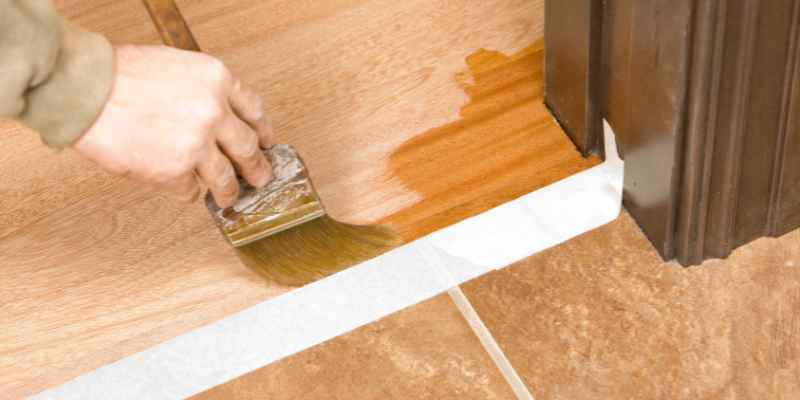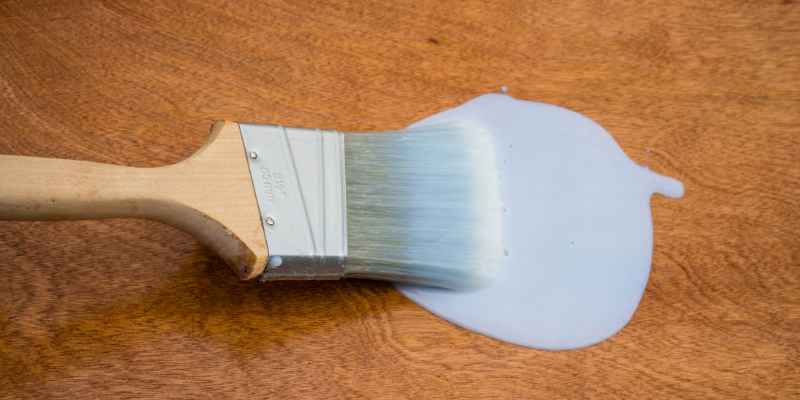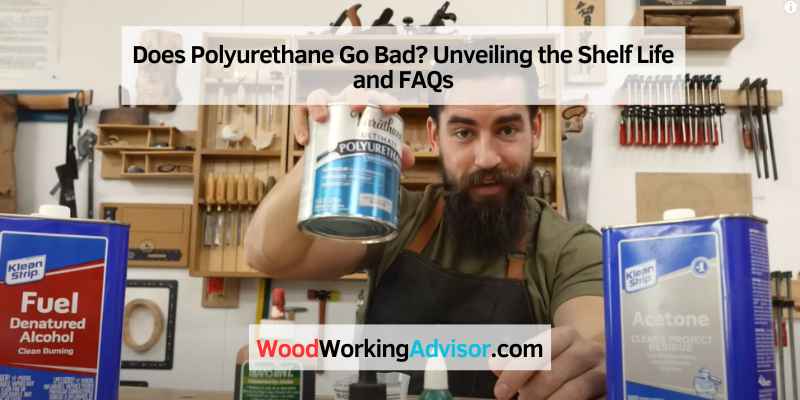Polyurethane has a shelf life and can go bad over time if not stored properly.
What Is Polyurethane?
Polyurethane, a versatile material used in various applications, does have a shelf life. Over time, it may become thick or yellowed, indicating that it has gone bad. Proper storage and temperature control can help extend its longevity.
Polyurethane is a versatile material that has gained widespread popularity due to its excellent durability, versatility, and ease of use. It is a type of synthetic resin that is created by combining polyol and isocyanate compounds. The resulting material has exceptional strength and resilience, making it suitable for various applications.
Composition Of Polyurethane
Polyurethane consists of two main components: polyol and isocyanate. Polyol is a type of alcohol that is typically derived from petroleum products. Isocyanate, on the other hand, is a reactive chemical compound that contains an isocyanate group. When these two components are mixed together, a chemical reaction called polymerization occurs, resulting in the formation of a polyurethane polymer.
The exact composition of polyurethane can vary depending on the specific application and desired properties. Additives such as catalysts, blowing agents, and fillers may be incorporated to enhance specific characteristics such as flexibility, fire resistance, or insulation properties.
Common Uses Of Polyurethane
Polyurethane is widely used in various industries and applications due to its exceptional properties. Here are some common applications of polyurethane:
- Furniture: Polyurethane foam is commonly used in the manufacturing of seat cushions, mattresses, and upholstery due to its comfortable and supportive properties.
- Coatings and Finishes: Polyurethane coatings are often used as a protective finish for wood, metal, and concrete surfaces. They provide excellent resistance to wear, chemicals, and UV radiation.
- Insulation: Polyurethane foam is widely used as insulation material due to its high thermal resistance and ability to tightly seal gaps and cavities.
- Automotive: Polyurethane is used in various automotive applications, such as seat cushions, bumpers, gaskets, and wheels, due to its excellent durability and impact resistance.
- Adhesives and Sealants: Polyurethane-based adhesives and sealants offer excellent bonding and sealing properties, making them suitable for a wide range of applications, including construction, automotive, and electronics.
These are just a few examples of the diverse range of applications where polyurethane is used. Its versatility and durability have made it an indispensable material in many industries.

Does Polyurethane Have An Expiration Date?
Does Polyurethane Have an Expiration Date?
The shelf life of polyurethane is an important consideration for anyone working with this versatile product. Understanding its expiration date can ensure that you achieve the best results and avoid any performance issues. Polyurethane, like many other substances, does have a shelf life. In this article, we will explore the factors that impact the shelf life of polyurethane and provide insights on how to determine if your polyurethane has gone bad.
Understanding The Shelf Life Of Polyurethane
Polyurethane is a widely used substance known for its durability and protective properties. However, over time, it can degrade and become less effective. The shelf life of polyurethane refers to the duration during which it maintains its intended properties.
The specific shelf life of polyurethane can vary depending on factors such as the type of polyurethane, the storage conditions, and the presence of certain additives. While some types of polyurethane may have a longer shelf life, others may degrade more quickly.
Factors Affecting The Shelf Life Of Polyurethane
Several factors can affect the shelf life of polyurethane. These include:
- Exposure to air and moisture: Polyurethane is sensitive to moisture and exposure to air can cause it to deteriorate. It is important to store polyurethane in tightly sealed containers.
- Temperature: Extreme temperatures, both hot and cold, can accelerate the degradation of polyurethane. It is advisable to store polyurethane in a cool, dry place.
- Light exposure: Ultraviolet (UV) light can cause polyurethane to break down and lose its effectiveness. Keeping polyurethane away from direct sunlight or fluorescent lights can help extend its shelf life.
- Storage conditions: Proper storage conditions are vital for maximizing the shelf life of polyurethane. Store it in a clean, dry environment away from any potential contaminants.
- Additives: Polyurethane formulations may contain various additives that can impact its shelf life. Some additives may extend the shelf life, while others may cause it to degrade more quickly.
By understanding these factors and implementing proper storage practices, you can prolong the shelf life of polyurethane and ensure optimal performance in your projects. If you suspect that your polyurethane has expired or gone bad, there are a few signs to look out for.
Signs Of Expired Polyurethane
Polyurethane that has expired can be identified through signs like a thickened consistency, discoloration or yellowing, and a strong odor. It is important to check the shelf life of polyurethane before using it to ensure optimal results.
Polyurethane is a commonly used finish for various surfaces, including wood furniture, floors, and cabinets. However, like any other chemical product, polyurethane does have a shelf life. Over time, polyurethane can deteriorate, leading to changes in appearance and a decline in performance.
Changes In Appearance
Expired polyurethane can manifest in several visual clues that indicate its decline in quality. Keep an eye out for these signs:
- Fading: Your polyurethane might lose its original color and become paler or duller over time. This can affect the overall aesthetic of the surface it is applied to.
- Yellowing: Polyurethane can also develop a yellow tint as it ages. This discoloration can be particularly noticeable on light-colored surfaces and may be an indicator of expired product.
- Clumping: If you notice clumps or lumps in the polyurethane, it is a clear sign that the product has gone bad. Clumping indicates that the chemical composition has changed and is no longer suitable for use.
- Skinning: Another indication of expired polyurethane is the formation of a skin-like layer on the surface of the product. This occurs when the top layer of the polyurethane oxidizes and dries out, making it difficult to mix and apply evenly.
Alteration In Performance
Expired polyurethane not only affects the appearance but also the overall performance of the finish. Here are some performance-related signs to watch out for:
- Decreased durability: As polyurethane expires, its ability to resist scratches, stains, and general wear and tear diminishes. This can leave your surfaces vulnerable to damage.
- Inconsistent coverage: Expired polyurethane may exhibit uneven coverage, resulting in streaks, patches, or an overall blotchy appearance. This can compromise the finished look of your project.
- Reduced adhesion: Polyurethane that has gone bad may struggle to adhere properly to the surface it is applied to. This can lead to peeling, flaking, or an inability to create a solid protective layer.
- Extended drying time: If you find that your polyurethane takes longer to dry than usual, it could be an indication that the product is expired. A longer drying time can be frustrating and may affect the efficiency of your project.
Being aware of these signs can help you identify when your polyurethane finish has gone bad. It’s important to use fresh, high-quality polyurethane to ensure optimal results and protection for your surfaces.

Proper Storage And Handling Of Polyurethane
Proper storage and handling are crucial for maintaining the shelf life of polyurethane. Take necessary precautions to prevent degradation and ensure effective application.
Ideal Storage Conditions
To ensure the longevity of polyurethane and maintain its effectiveness, it is crucial to store and handle it properly. By following the ideal storage conditions listed below, you can significantly prolong the shelf life of polyurethane:
- Temperature: Keep polyurethane stored in a cool and dry environment with a consistent temperature range between 60°F to 75°F (15°C to 24°C). Extreme temperature fluctuations can lead to degradation and reduced performance. Avoid storing it near direct heat sources or in areas with high humidity.
- Light Exposure: Protect polyurethane from exposure to direct sunlight or strong artificial light as it can cause the product to deteriorate over time. Store it in a dark or opaque container to minimize light exposure.
- Container: It is recommended to store polyurethane in its original container to maintain its integrity. Ensure the container is tightly sealed after each use to prevent air from entering and causing premature oxidation.
Tips For Prolonging Shelf Life
Follow these tips to extend the shelf life of your polyurethane:
- Minimal Air Exposure: Whenever using polyurethane, pour the desired amount into a separate container rather than directly from the original packaging. This reduces air exposure to the remaining polyurethane, reducing the risk of oxidation.
- Consistent Stirring: Before using polyurethane that has been stored for a while, gently stir it to ensure any settled particles are evenly dispersed. This helps maintain the product’s consistency and effectiveness.
- First In, First Out (FIFO) Principle: If you have multiple containers of polyurethane with different purchase dates, follow the FIFO principle. Use the oldest stock first to prevent the older containers from sitting unused for extended periods, which may cause them to degrade faster.
By adhering to the ideal storage conditions mentioned above and implementing the tips for prolonging shelf life, you can optimize the usability and longevity of your polyurethane. Remember to always read the manufacturer’s instructions and recommendations specific to the product you are using.
Conclusion
Understanding the shelf life of polyurethane is crucial for ensuring optimal performance and results. By storing it properly and using it within the recommended timeframe, you can prevent it from going bad and prolong its effectiveness. Being aware of the signs of deterioration and knowing when to replace it will save you time, money, and frustration in your projects.
So, make sure to check the expiration dates and follow the manufacturer’s guidelines to maximize the shelf life of your polyurethane.


